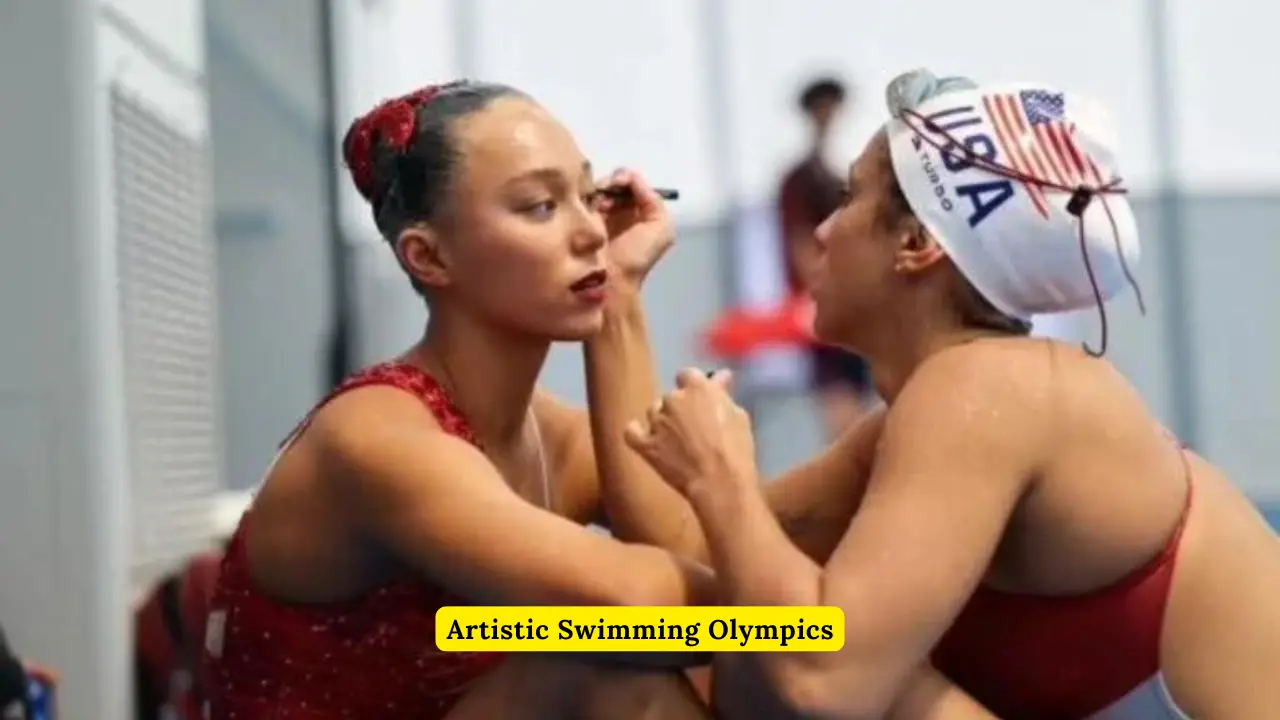
Artistic Swimming Olympics
Artistic swimming, formerly known as synchronized swimming, is set to create history at the 2024 Paris Olympics. This highly anticipated event marks a revolutionary change with the inclusion of male athletes in the competition, showcasing the evolution and inclusivity of the sport. The 2024 Paris Games will witness artistic swimming embracing a new era, blending grace, strength, and unparalleled creativity. Artistic Swimming Olympics
The Evolution of Artistic Swimming
Artistic swimming has undergone significant transformations since its inception. Originally dominated by female athletes, the sport has expanded to include men, reflecting a growing recognition of their talent and contribution. The rebranding from synchronized swimming to artistic swimming further emphasizes the sport’s artistic and athletic elements.
Historical Background
The origins of artistic swimming date back to the early 20th century, with the first major international competition held in 1952. Over the decades, the sport has gained popularity and respect, eventually becoming an Olympic event in 1984. The inclusion of male athletes in the 2024 Paris Olympics marks a pivotal moment, promoting gender equality and diversity.
The Rebranding and Its Impact
The rebranding to artistic swimming in 2017 by the International Swimming Federation (FINA) aimed to better represent the sport’s blend of artistry and athleticism. This change has helped to elevate the sport’s profile, attracting a broader audience and encouraging more athletes to participate.
Men in Artistic Swimming: A New Era
The inclusion of male athletes in the artistic swimming events at the 2024 Paris Olympics is a significant step towards gender inclusivity in sports. This decision has been met with enthusiasm from athletes, fans, and the global sports community.
Trailblazing Male Athletes
Several male athletes have already made their mark in artistic swimming, demonstrating exceptional skill and artistry. Their participation in the Olympics will not only showcase their talent but also inspire future generations of male swimmers to pursue the sport.
Mixed Duets: A Showcase of Skill and Harmony
The mixed duet category, introduced in the World Championships in 2015, will be a highlight of the Paris Olympics. This event pairs male and female swimmers, combining strength and grace in a harmonious performance. The inclusion of mixed duets in the Olympics is a testament to the sport’s evolving dynamics and the celebration of teamwork and mutual respect.
Training and Preparation: The Road to Paris 2024
Preparation for the Olympics is a rigorous and demanding process, requiring athletes to dedicate countless hours to training. Artistic swimmers must master a combination of swimming techniques, choreography, and synchronicity, all while maintaining a high level of physical fitness.
Intensive Training Regimens
Artistic swimmers undergo extensive training that includes swimming drills, strength conditioning, flexibility exercises, and dance routines. These elements are crucial for developing the endurance, power, and precision needed for their performances.
Choreography and Music Selection
Choreography is a vital aspect of artistic swimming, requiring athletes to synchronize their movements with music. The selection of music and the creation of routines are carefully planned to highlight the athletes’ strengths and the artistic vision of their performances.
Team Coordination and Synchronization
Team events in artistic swimming demand impeccable coordination and synchronization among all members. Athletes must work together seamlessly, executing intricate routines with precision and timing. This level of teamwork is essential for achieving high scores and captivating the audience.
Judging and Scoring: Understanding the Criteria
Artistic swimming is judged based on several criteria, including technical skill, artistic impression, and difficulty. Judges evaluate the athletes’ execution of movements, synchronization, and overall presentation.
Technical Skill
Technical skill encompasses the swimmers’ ability to perform precise and controlled movements. This includes lifts, spins, and underwater sequences, all executed with flawless technique.
Artistic Impression
Artistic impression focuses on the creativity, choreography, and interpretation of the music. Judges look for performances that are engaging, expressive, and aesthetically pleasing.
Degree of Difficulty
The degree of difficulty is assessed based on the complexity of the routines and the risk involved in the movements. Higher difficulty scores are awarded to routines that challenge the athletes’ abilities and push the boundaries of the sport.
The Significance of the 2024 Paris Olympics
The 2024 Paris Olympics will be a landmark event for artistic swimming, marking the sport’s continued evolution and growing acceptance of male athletes. This inclusion not only promotes gender equality but also enriches the sport by bringing diverse talents to the forefront.
Global Recognition and Growth
The global recognition of artistic swimming will be further enhanced by the Olympics, inspiring more people to appreciate and engage with the sport. The increased visibility will likely lead to greater participation and support at all levels, from grassroots to elite competitions.
Inspiring Future Generations
The participation of male athletes in the Olympics will serve as a powerful inspiration for young boys who aspire to excel in artistic swimming. This milestone will encourage a more inclusive and diverse future for the sport, where talent and dedication are celebrated regardless of gender.
Conclusion
The 2024 Paris Olympics will be a historic moment for artistic swimming, highlighting the sport’s artistic brilliance and athletic prowess. The inclusion of male athletes signifies a progressive step towards equality and diversity, setting a new standard for future competitions. As we look forward to witnessing these groundbreaking performances, the legacy of the Paris Games will undoubtedly inspire and transform the world of artistic swimming.





